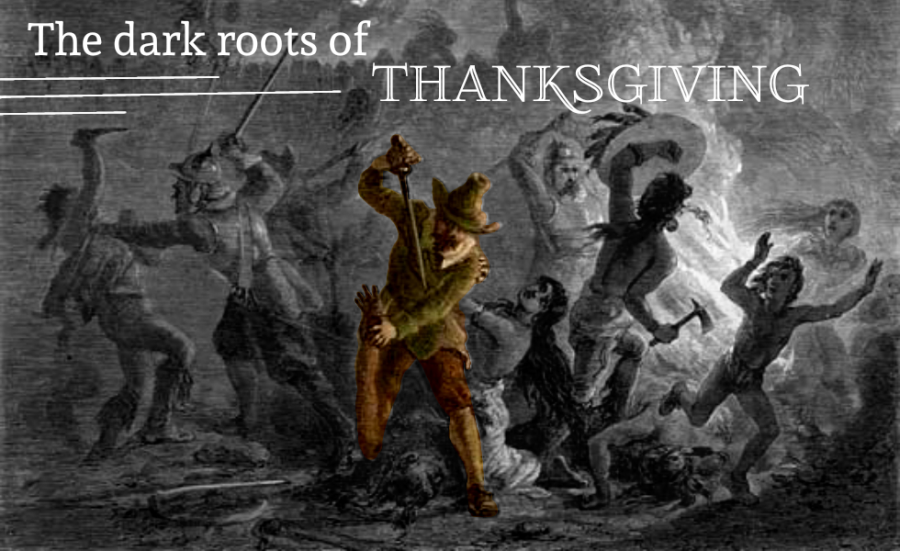Reality check: Thanksgiving Edition
The dark roots of Thanksgiving
Looking back on younger years, students can remember the fun days leading up to Thanksgiving break. This could consist of eating snacks from “A Charlie Brown Thanksgiving,” as well as watching the movie together, among many other things. One key event that many remember is dressing up as “Pilgrims and Indians.” However, in this adolescent age, many didn’t understand the cultural appropriation of the costumes, and they just went along with what they were told to do. This made an inappropriate adaptation of a group of people and glanced over the true history behind Thanksgiving. Whether being taught inaccurate information or not understanding the significance of taking responsibility as a nation, this holiday isn’t as pretty as it seems.
In general, there is a lot of controversy with Thanksgiving. There are many historical inaccuracies that have consistently been pushed on students at a young age. Conflicts and tensions ran through the relationship that the Native people had with settling Europeans. Europeans were forcing themselves into a land that they did not own and that other people were already living and thriving on for thousands of years. Capturing land comes with genocide, disease, mass bloodshed, raiding and much more. There was not an innate friendliness like we had been taught to believe, but more so the antithesis. The great myth is that the Pilgrims and Indians were inviting towards each other and that the Native people invited them to take over their land. This is simply not true.
Creating a holiday that is centered around friendliness, community and this myth of our “founders” gave the nation a sense of nationality that didn’t need to be there. It gave people an opportunity to look over the dark past of colonizing and gave a pretty title to very serious colonialism. New Englanders took an opportunity in 1769 plant the idea of founding America on behalf of the pilgrims in an attempt to boost tourism in, soon to be irrelevant, New England. Basically, they wanted to create a lie centered around founding America so that people would keep moving in. Even though there was a sort of alliance between a Native Tribe and Europeans, it wasn’t based on unity, but was based on hope for survival and some type of truce. The brutal reality of this coming together was that the tribe leader wanted to save their people from decimating disease that was already killing so many.
Even though Thanksgiving was actually founded on bloodshed, it doesn’t mean that Americans can’t celebrate a holiday based on the act of giving thanks. In 1863, President Abraham Lincoln encouraged Americans to recognize the last Thursday of November as “a day of Thanksgiving.” For many in America, Thanksgiving is a hard holiday individually. Some don’t have the resources, money or food to provide for themselves and their family members. Families fight behind the scenes, even if the “pictures turned out nice.” There is also a massive abundance of food waste that occurs. Still, with a falsehood of founding and a completely peaceful dinner, one must understand the truth of the matter. It’s the school system’s job to teach the truth to their students. Teachers should have the choice as to when teaching the truth of the relationship between the Native Americans and Pilgrims is best, but before that, they can shift the focus towards the meaning behind the holiday — giving thanks, families coming together, etc, instead of anything that can be construed as cultural appropriation. It is also the nation’s job to take responsibility for their actions in the “founding of America.” The nation must confront its dark past and strive to teach the truth, even if it isn’t nicely wrapped up in a ribbon.



